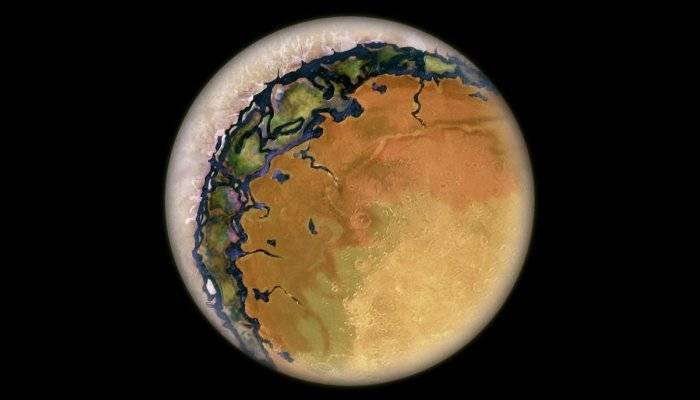Many discovered exoplanets have characteristics similar to the worlds of our Solar System. Therefore, they receive nicknames like “Hot Jupiter”, “Mini Neptune”, or “Super Earths”. But it seems that there is another kind of somewhat different exoplanet: the eyeballs, which look like a giant eye.
Well, there is nothing strange about the surface of these planets for them to look like. They come in this form because of tidal mating – meaning the planet always has the same side toward its host star. A tidal-coupled world takes to rotate around its axis as much as it spends to orbit around the star.
Thus, each side of the planet has permanent and opposite characteristics. On the one hand, it will always be day; The other will always be night. If this planet is warm, that is, if it is near its star, the light-receiving side will be rocky and dry, while the liquid will be on the dark side. On an icy ocular planet that is farther from the star, the daytime side will house the liquid water, while the nighttime side will be formed by ice and rocks. There is also a possibility that on one side there is only rock and on the other ice with a narrow water ring in the middle.

According to a study published in 2013 in the journal Astrobiology, the aquatic ring of a warm ocular planet, like the one in the image above, could be habitable. Because
in this region
there would be a permanent twilight, receiving only enough heat to melt some of the glaciers. Liquid water would transform part of the rocky region into a fertile area where vegetation could grow. In the case of icy ocular planets, the habitable region woul
d be the part facing the host star.
There are other differences between the day and night sides of a tidal-coupled planet, even though they are not ocular planets. According to the author of the study, these differences may be with
clouds grouped only in certain areas, or with melting ice only on one side. The galaxy may be full of worlds with different characteristics because of the locked orbit relative to the host star.
Although hypothetical, this category of planets may be common. The Kepler 2626-01 object can be an ocular planet, for example, just like some of the TRAPPIST-1 system planets. Eyeball planets, as they are called in English, are of interest to astronomers because there is a good chance that we will find life in them. Depending on the heat of the star, the proximity of the planet to the star, and other factors essential to life, who knows what we can find in worlds like these?
Source: Science Alert
